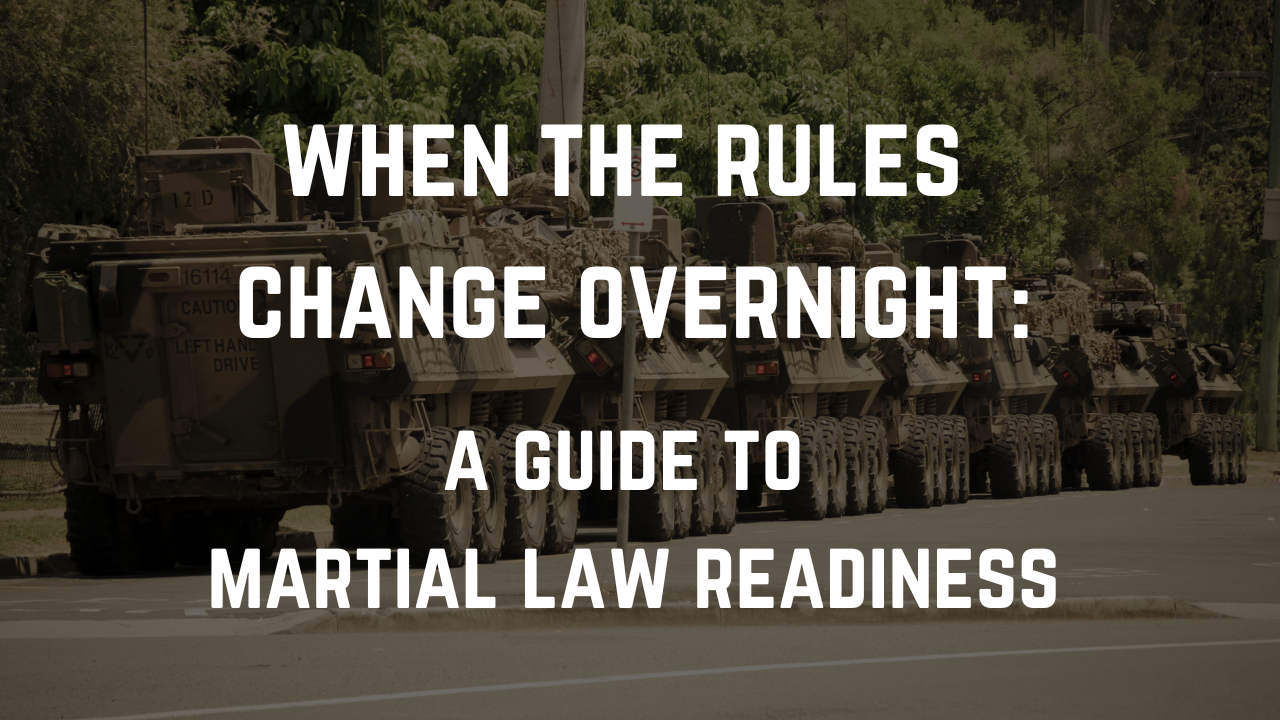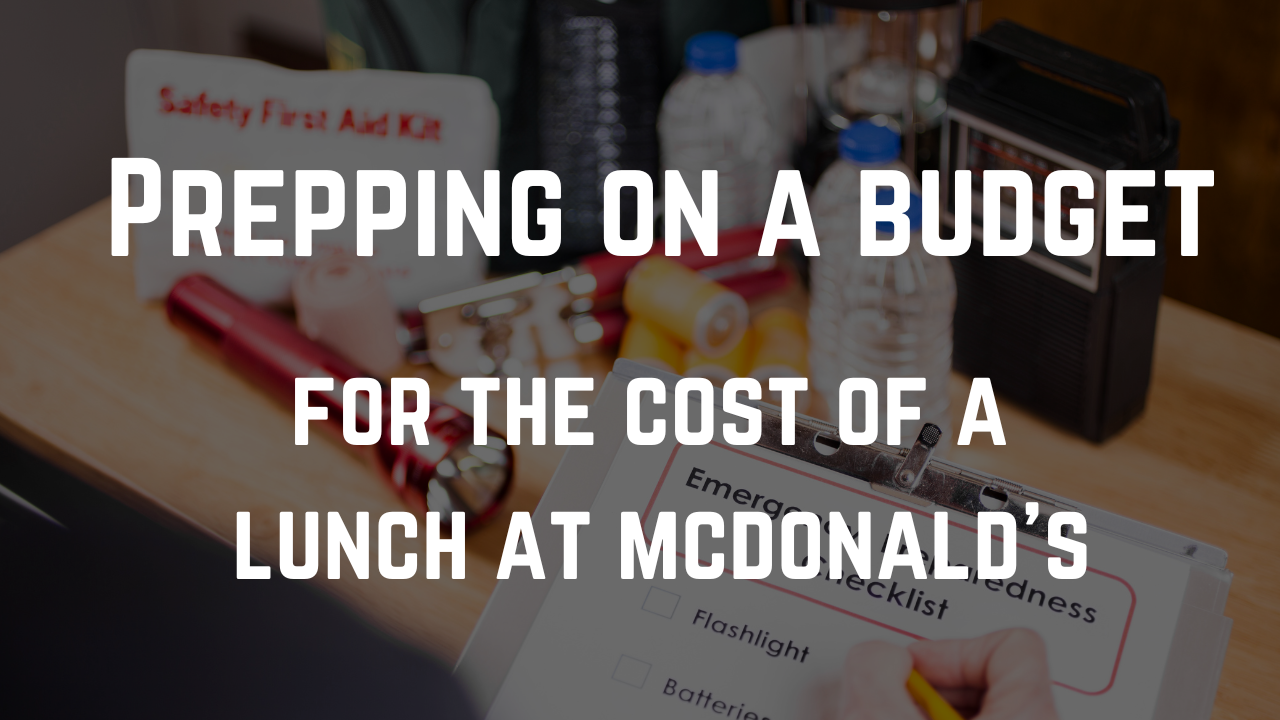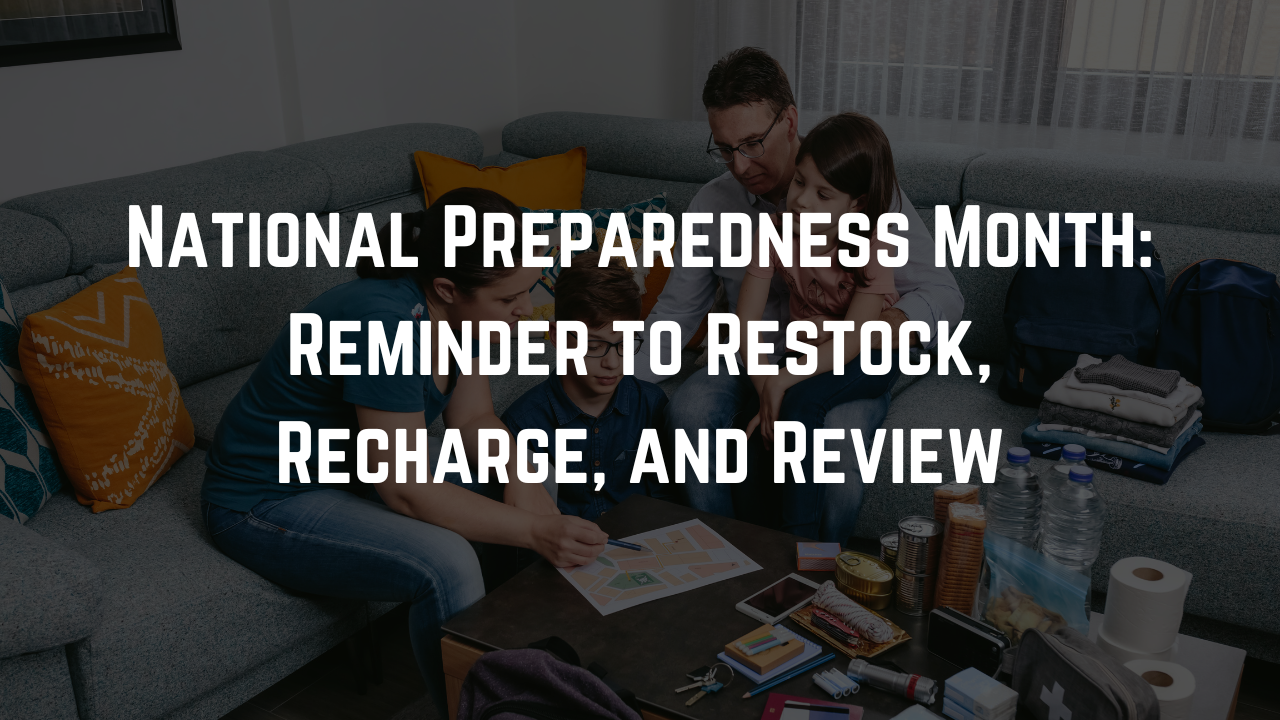.png/:/cr=t:0%25,l:0%25,w:100%25,h:100%25/rs=w:1280)
Disasters can disrupt services and delay emergency response. FEMA recommends being ready to be self-sufficient for at least 72 hours. This is a minimum—more is better when you can.
Before building longer-term resilience, start with a 72-hour emergency kit that covers water, food, health, light, shelter, and essential tools for your household.
Here’s a quick checklist to get started (you can download the 72-Hour Emergency Kit Checklist PDF here):
1. Water & Hydration
- ☐ 1 gallon of water per person/pet, per day (3 days minimum, ideally 7-10)
- ☐ Water purification tablets or a portable filter
- ☐ Electrolyte packets or oral rehydration salts
2. Food
- ☐ Shelf-stable, ready-to-eat foods (bars, pouches, canned goods, nut butters)
- ☐ Manual can opener (if packing cans)
- ☐ High-calorie emergency ration bars (optional)
- ☐ Disposable utensils/bowls or a small mess kit
3. First Aid & Medications
- ☐ Basic first-aid kit (bandages, antiseptic, gauze, tape, gloves)
- ☐ Tourniquet (if trained)
- ☐ 3–7 day supply of prescription meds + copies of prescriptions
- ☐ Pain reliever, antihistamine, antacid/anti-nausea
- ☐ Spare glasses/contacts and solution
4. Light & Communication
- ☐ LED flashlight or headlamp (battery/hand-crank)
- ☐ Extra batteries or a solar/hand-crank charger
- ☐ Portable phone charger (power bank) + cables
- ☐ Hand-crank or battery weather radio (NOAA/All-Hazards)
- ☐ Written list of important phone numbers
5. Shelter & Warmth
- ☐ Mylar emergency blankets or sleeping bags
- ☐ Seasonal clothing (sturdy shoes, socks, gloves, hat, rain poncho)
- ☐ Compact rain poncho
6. Tools, Documents & Money
- ☐ Multi-tool/knife; duct tape; whistle
- ☐ Important documents in a waterproof pouch (IDs, insurance, prescriptions, vet records)
- ☐ Cash in small bills ($100+)
You probably own many of these items already. Build your kit gradually—each grocery trip, add a gallon of water and one or two shelf-stable foods your household actually eats. Small steps add up fast.


